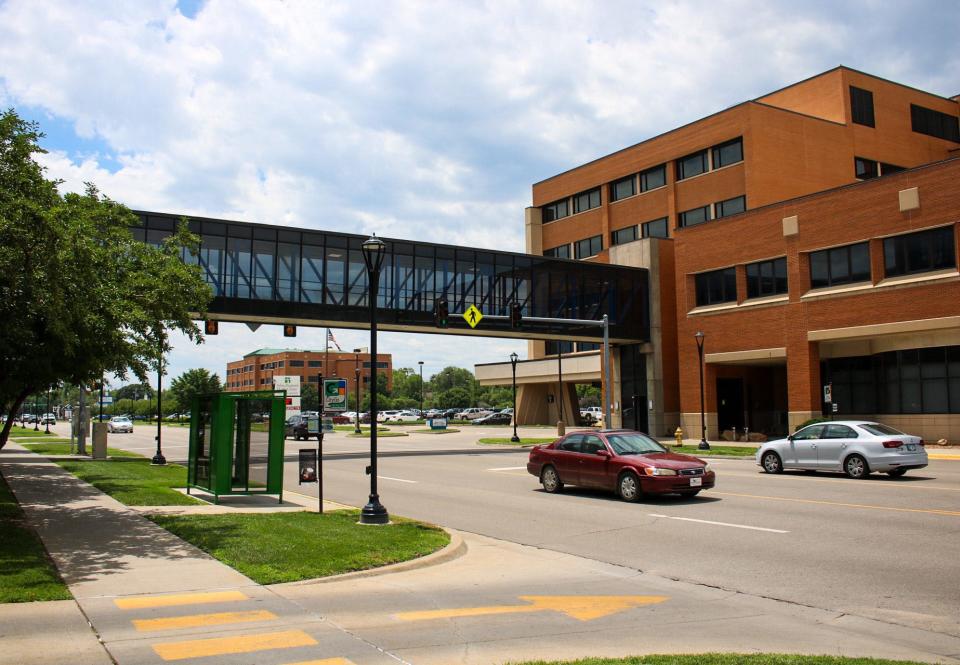Here's how hospital price transparency is creating tension for Salina Regional
A couple of years ago, the federal government passed a new law requiring hospitals to publish something that had long been out of public purview.
Beginning in July 2022, hospitals were required to post on their websites itemized prices they negotiated with insurers for health care services. In the year since, the law has provided the public unprecedented access to the cost of specific services hospitals provide.
Americans could now look up the price of care before going to the hospital. But that was just one side of the die.

Experts believe releasing this data will have a dramatic impact on how hospitals and insurers negotiate rates in the future. On the local level, an outcome of this newly available data has been growing tensions between Salina's hospital and the largest health insurer in Kansas.
Why is price transparency such a big deal?
In the past, this kind of information was not only considered private, but it was highly protected from a legal standpoint. Hospitals signed contracts with insurers to keep the negotiated prices confidential.
Colette Lasack, vice president of revenue cycle operations at The University of Kansas Health System, said price transparency legislation has presented a new challenge for hospitals and insurers alike.
“It’s really taken away, I think, a lot of the barriers, but I think it’s also brought up a whole different world for both the payer and hospitals trying to negotiate,” Lasack said.
Transparent pricing has provided the public with a better understanding of what they are likely to pay out of pocket and with insurance, but Lasack said she believes it's likely to have a much farther-reaching impact.
Hospitals can now see what other hospitals are being paid by insurers. And insurance companies can see what other insurance companies are paying hospitals. It's a historic change that Lasack is interested to see play out as a veteran in the health care field.
"It's really changed the way hospitals and insurers can negotiate," Lasack said.
The average person will run into roadblocks pricing unique services
Under the new law, hospitals were specifically tasked to publish a machine-readable standard charges file for their items and services, including the prices they negotiate with private insurers, and the actual price of at least 300 shoppable services.
While the data can provide patients an idea of cost, specific services patients need after visiting in person might not be summed up in their hospital's list of shoppable services online.
Other services — thousands of them — can be found on machine readable files.
“The average person would have huge difficulty trying to download that file because they’re so big and they’re so complex,” Lasack said. “The average person doesn’t even have the software to be able to download that.”
Those who take a chance at digesting those large files will discover that they are not user friendly. The files often look different hospital to hospital and create problems for patients trying to accurately compare price points.
For instance, Stormont Vail Health has its standard charges file published in HTML format, while Salina Regional's standard charges file is on a downloadable CSV Excel spreadsheet.
How does this affect negotiations between Blue Cross Blue Shield of Kansas and Salina Regional?
Salina Regional claims Blue Cross paid comparable health systems in the state up to 50% higher rates than it paid Salina Regional, and possibly other providers, for at least two years.
Blue Cross holds that Salina Regional is not paid 50% less than its competitors and that the health system is paid the same as hospitals of similar size.
Each party's claims are rooted in hospital pricing data found in the more complicated machine-readable files published with thousands of entries and data points. Salina Regional has not shared publicly what services it claims Blue Cross pays other hospitals higher rates for.
This week, Salina Regional said it does not have any updates to share from the negotiation process. Blue Cross did not respond to requests for comment in time for publication.
What patients should know: Understanding Salina Regional and Blue Cross' continued negotiations over rates
How to look up your prices at Salina Regional Health Center
Most hospitals have price transparency data on designated web pages or under their patient financial services page. Hospitals commonly utilize existing technology within their medical systems like Epic, a software company, to develop tools to help patients shop available services.
Salina Regional Health's pricing data is found on a page titled "Price Transparency." Visitors can click on the "patient price estimator" to view shoppable services.
Before you can shop services, the page will have visitors check boxes of a disclaimer that states prices are only an estimate and that actual charges may be higher or lower than the estimate provided. From there, you can enter your insurance information or chose to see out-of-pocket pricing.
Visitors can also find the hospital's standard charges file on the price transparency page, complete with 40,390 data cells.
If users find the online system overwhelming, hospitals also take calls from patients to provide a quote, or rough estimate, of what a specific service could cost.
Negotiations between Salina Regional and BCBSKS are ongoing. The Salina Journal will provide additional coverage as more information comes available.
Kendrick Calfee has been a reporter with the Salina Journal since 2022. You can reach him at kcalfee@gannett.com or on Twitter @calfee_kc.
This article originally appeared on Salina Journal: How public hospital pricing data affects Salina Regional negotiations

